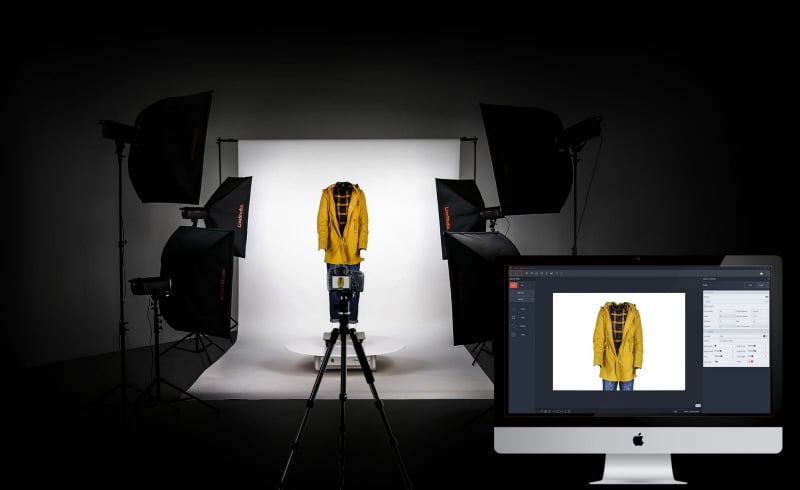E-commerce product photography: 4 reasons to produce your own visuals
In e-commerce product photography, creating your own visuals lets you take control of your communications. Whether converting visitor interest to sales or adapting to the latest trends, here are the points to consider.
1- Turn intention into online sales
One of the ways you can master sensory marketing is by giving consumers the power to see and touch the products they want to buy. But when you’re reaching consumers over the internet, it’s essential to compensate for the absence of physical touch by using high quality visuals (capture the smoothness of the ring you want to sell, as if they could feel it themselves). A European study carried out by PackshotCreator in 2013 confirms that still product photos, 360 and 3D animations are the primary element inciting consumers to make a purchase.
2- Match your visuals to your products
We don’t buy furniture the same way we would buy electronics or printer toner, so it often makes sense to think about what kind of visuals you need before you put images online. Do you need single or multi-view photos, animations, compositions or images of products in context? Once you’ve determined what you need, you can set up an image production flow and visual guidelines for your e-commerce website.
- HD products photos : if you’re selling straightforward items that do not need to communicate much visual information, like food packaging or wines & spirits.
- Multi-views : one of the most popular solutions. These allow you to provide clients with all the visual information they need while reducing the textual part of your product files to the strict minimum. Multi-view packshots help you significantly improve the conversion rate of your e-commerce website.
- 360° packshot animations : these add interactivity to your e-commerce website. They’re perfect for displaying accessories. To produce this kind of animation, you need to take multiple photographs of a single item (32 on average). The position shifts around a central axis at regular intervals until the item has made a full rotation.
3- E-commerce product photography: they provide your visitors with a different context
New tools are at your disposal to provide your visitors with new experiences, keeping pace with developments in the online market and the appearance of multi-channel / cross-channel retailing.
Let your visitors configure products themselves. The goal is to provide a sensory experience so that consumers gain a sense of ownership and imagine themselves with the product in the right context. As early as 2014, Ikea began offering website visitors an Augmented Reality experience. This allows future buyers to use their smartphones or tablets to visualize what a computer-modelled sofa would look like in their living rooms, for instance. Opticians use the same technology to allow customers to try on a virtual pair of glasses in real time.

4- Live up to Gen Y expectations
Digital generation of e-commerce product photography: technological developments like Oculus and Playstation VR are eroding the boundaries between video games and e-commerce. Augmented Reality and Virtual Reality blend practical features with interactivity. Visitors to your online store can visualize themselves with your products in their own environment, and if they buy furniture, they no longer have to measure everything in store!
As a recent example, in 2016, Chinese e-commerce behemoth Alibaba set up the Buy+ system. This Virtual Reality shopping technology allows internet users to immerse themselves fully in the shopping experience. It’s an invaluable tool for any online store with Generation Y customers, who were weaned on video games. Online shoppers can browse store aisles as they please, bringing up product characteristics by looking at the action buttons.
Bonus : what are the options for e-commerce entrepreneurs to create in-house product photos?
From simple photos to Augmented or Virtual Reality, there are numerous options to create your visuals in-house.Depending on the quantity and/or complexity of your visual needs, you may wish to hire an in-house service provider to cut down on the hassle of return trips. An external service provider will generally use his or her own photographic equipment.
E-commerce product photography: a solution for a greater responsiveness
Another option is to set up equipment on site. A Packshot photo studio is ready to use, and can easily be operated by a professional photographer or a staff member. This kind of studio can be configured to create photos or 360° products animations of different items. It is made up of a box with lighting connected to a computer and operated by dedicated software. The software features allow you to standardize and unify your image production. Other features allow you to enhance photos by adding interactive zoom, scripted animations, or smart image distribution.

Investing in your e-commerce product photography ensures fast reaction times and high image quality to make your online shop window stand out from the competition. Beyond e-commerce needs, bringing your image production in-house lets you take charge of everything from communications and archiving to quality control. The common denominator in each of these domains is the need to manage production flows as well as possible.
Become the photographer of your products
Other posts you might be interested in :

Boost your conversion rate: 4 mistakes to avoid
Photos represent the first factor prompting a purchase from online consumers, followed by visuals technical details and product descriptions, then by online client reviews.

E-commerce: from the physical stockroom to the digital product photography inventory
Digital product photography: PackshotCreator and Wizishop are offering an exclusive webinar to help you become your own product photographer.

3 good practices for organizing your pictures production
We would like to examine, in this continuation of our 4-post series, the best practices which will make the acquisition of a packshot photo studio a success.